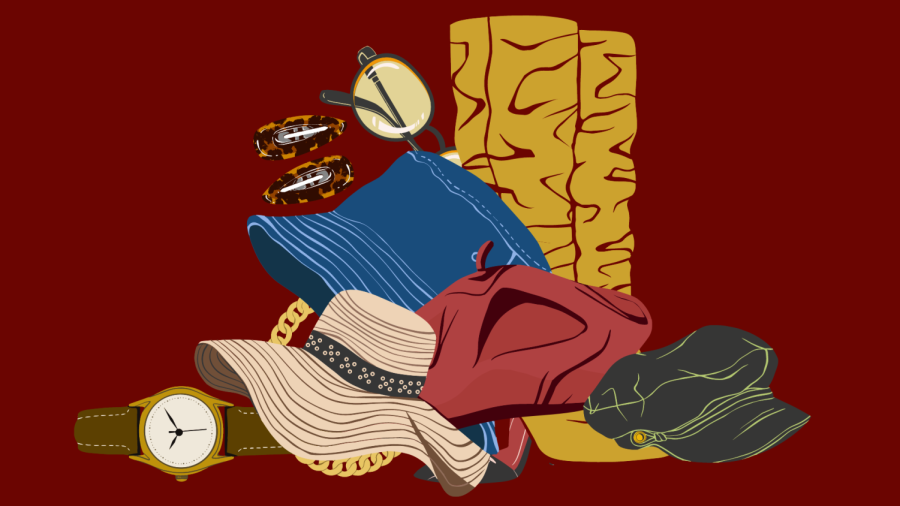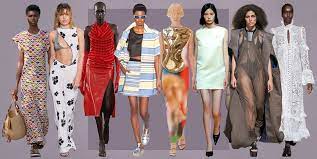Fashion Today
High Heels Are Back — How Will We Wear Them Now?
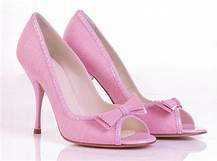
In February, Marina Larroudé got dressed up to go out to dinner in her Upper East Side neighborhood in New York. The weather was still wintry, but the designer, who recently launched her eponymous shoe brand, was determined to wear a heel from her new collection.
“My son, who is seven and has seen me wear high heels his entire life, said to me, ‘Oh Mommy, you look high!’” Larroudé recalled with a laugh. “We were so used to wearing them in the past and feeling confident, tall and sexy, having the posture that comes with it. All of a sudden, after not wearing them for a year, when I put them on again, he saw that confidence, that height. We didn’t realize the power they had.”
Larroudé is not alone. Now as spring melts both the restraints of winter weather and the confinements of pandemic quarantine as vaccinations roll out, high-heel wearers across the U.S. are likely looking into their closets, assessing their options. If the chaos of Miami Beach’s spring break bacchanal is any indication, pent up demand for celebration is alive and well — and that zest will call for fashion to match it (responsibly, one hopes). What fashion item is more symbolic of revelry than the high heel?
From designers to shoppers and everyone in between, the consensus is that the high heel’s return is certain and imminent. (Some might argue that the style never left as evidenced by the demand for Amina Muaddi’s signature martini heels over the past year, even in the depths of lockdown.)
But how will we wear them now, after a year at home — and a year of turmoil? After the pandemic, building back the high heel is a question not just of festivity or taste, but also one of how we’ll redesign entire lifestyles moving forward.
For some, the answer is based on pure, raw emotion. “I think everyone wants a bit of a lift, and I tend to go with my gut. We all want to be dreaming a little bit,” said designer Maria Cornejo, who included sensible — but significant — wooden block heels in her Zero + Maria Cornejo fall ’21 collection. “We didn’t sell a lot of heels (last year), we sold more of the styles you can wear at home. But we can’t give up. That’s the whole point of fashion, to dream a little bit and take ourselves out of the doldrums.”
As much as it represents celebration and festivity, the high heel also stands as a symbol of tradition — for better or worse. A handful of women alleging that New York Governor Andrew Cuomo demands a specific dress code — that always includes a high heel — is indicative of the literal and figurative restraints and connotations the shoe still holds for women — a modern comparison to the corset. Contrast the footwear choices of the most powerful woman in the U.S. — Vice President Kamala Harris, who often wears sneakers in public — with the towering, stiletto pumps of former first lady Melania Trump. It’s easy to see that the shoe can come with some cultural baggage, itself a symbol of identity politics and the shifting stations of women.
For most women and high-heel wearers, though, footwear choices will come down to practicality, not politics. During the Presidential Inauguration, First Lady Jill Biden rotated two different pairs of Jimmy Choo pumps, which many fellow high heel wearers (regardless of party preference) saw as a familiar indicator of discomfort, akin to the footwear rotations seen at formal events such as weddings (in the end, many just take off their shoes altogether, going barefoot on a late-night dance floor).
Fashion Today
Top 10 Sites to Find Shinchan Images Online

Looking for cute and funny Shinchan images? Check out these top 10 websites to find a wide range of Shinchan images for free download. Get ready to explore the world of Shinchan with laughter and joy!
Introduction:
Shinchan, the lovable and mischievous character, has captured the hearts of people of all ages around the world. The adorable little boy with his witty one-liners and funny antics never fails to bring a smile to our faces. Whether you are a long-time Shinchan fan or someone just discovering the charm of this beloved character, finding the perfect Shinchan images can enhance your love for him.
In this article, we present the top 10 websites where you can easily find and download a plethora of Shinchan images to brighten your day. From hilarious expressions to heartwarming moments, these sites have it all. Let’s dive into the world of Shinchan and explore the best sources for his delightful images!
| Table of Content |
|---|
| 1. Shinchan with Friends |
| 2. Shinchan Funny Expressions |
| 3. Shinchan Family Moments |
| 4. Shinchan Adventures |
| 5. Shinchan Wallpapers |
| 6. Shinchan Coloring Pages |
| 7. Shinchan Merchandise |
| 8. Shinchan GIFs |
| 9. Shinchan Quotes and Captions |
| 10. Shinchan Fan Art |
1. Shinchan with Friends
Shinchan’s charm multiplies when he is surrounded by his friends. This section showcases a collection of adorable Shinchan images with his gang of friends. From outdoor adventures to silly pranks, these images capture the essence of friendship in the most heartwarming way.
2. Shinchan Funny Expressions

One of the reasons why Shinchan is so endearing is his range of funny expressions. This section presents a hilarious compilation of Shinchan’s most amusing facial expressions that will leave you in splits. Share these images with your friends and spread the laughter!
3. Shinchan Family Moments
Shinchan’s interactions with his family are both heartwarming and comical. In this section, explore images that depict the precious family moments shared between Shinchan, his parents, and his baby sister Himawari. These images will surely remind you of your own family’s antics.
4. Shinchan Adventures
Shinchan’s curiosity and fearlessness often lead him on exciting adventures. In this section, you will find images of Shinchan embarking on thrilling escapades that will transport you to a world of imagination and fun.
5. Shinchan Wallpapers

Looking to personalize your devices with the cuteness of Shinchan? This section offers a variety of Shinchan wallpapers to adorn your desktop or mobile screen. Choose from a range of designs and add a touch of Shinchan magic to your everyday life.
6. Shinchan Coloring Pages
Engage your creative side with Shinchan coloring pages. This section presents a selection of black and white Shinchan images that you can print and color. Get your crayons ready and create vibrant masterpieces of your favorite character!
7. Shinchan Merchandise
If you are a die-hard Shinchan fan, this section is perfect for you. Discover a wide array of Shinchan merchandise, including toys, clothing, accessories, and more. Show off your love for Shinchan with these delightful products.
8. Shinchan GIFs
GIFs are the perfect way to convey emotions in a fun and engaging manner. This section offers an assortment of Shinchan GIFs that you can use in your chats and social media posts to express yourself uniquely.
9. Shinchan Quotes and Captions
Add a touch of wit and humor to your captions with Shinchan quotes. This section presents a collection of quirky and entertaining Shinchan quotes and captions that you can use for your social media posts and stories.
10. Shinchan Fan Art
Discover the artistic side of Shinchan fandom in this section. Here, you’ll find fan-created artworks and illustrations that showcase Shinchan in various creative styles. Marvel at the talent and passion of Shinchan fans from around the world.
FAQs (Frequently Asked Questions):
- Can I download Shinchan images for free from these websites?Yes, all the websites listed in this article offer Shinchan images for free download.
- Are these websites safe to use?Yes, we have carefully selected reputable websites that are safe to browse and download images from.
- Can I use these images for commercial purposes?It’s essential to check the specific usage rights for each image before using them for commercial purposes.
- Do I need to create an account on these websites to download images?While some websites may require registration, many allow direct downloads without the need for an account.
- Are these images suitable for all ages?Yes, the images featured on these websites are generally suitable for audiences of all ages.
- Can I share these images on social media platforms?Absolutely! Feel free to share these delightful Shinchan images on your favorite social media platforms.
- Do these websites also offer Shinchan videos?This article focuses specifically on Shinchan images, but some of the websites may also have videos featuring him.
- Are there any copyright restrictions for using these images?While these websites provide images for free, it’s essential to respect copyright laws and give proper credit when necessary.
- Can I request specific Shinchan images on these websites?Some websites may offer a request feature, but it’s not guaranteed that all requests will be fulfilled.
- Are these websites accessible worldwide?Yes, the websites listed in this article are generally accessible from around the world.
Conclusion:
Shinchan’s adorable and mischievous personality has won the hearts of millions, and finding the perfect Shinchan images can bring immense joy and laughter to fans worldwide. With the top 10 websites mentioned in this article, you can now explore an incredible array of Shinchan images, ranging from funny expressions to heartwarming family moments.
Remember to respect copyright and usage rights when using these images, and don’t forget to spread the love for Shinchan with your friends and family. Whether you use these images for personal enjoyment or to express yourself on social media, Shinchan’s charm is sure to brighten up any day.
Fashion Today
Vera Bradley: Your One-Stop Shop for Travel Bags and Accessories
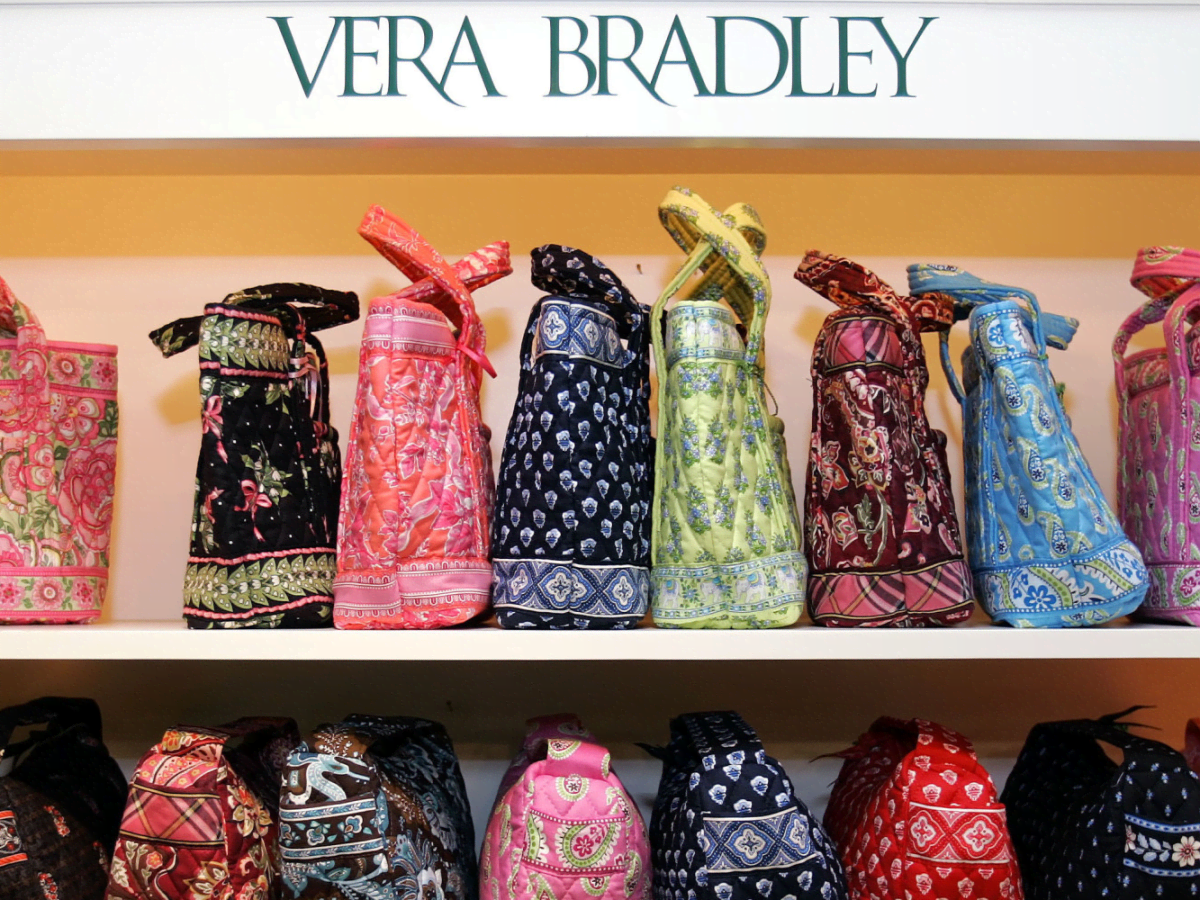
Vera Bradley has been a staple in the travel bag and accessory industry for decades. From weekend getaways to business trips, their stylish and durable products are perfect for all of your travel needs. Vera Bradley offers an impressive selection of luggage, backpacks, duffel bags, and other travel accessories in a variety of styles and colors, making it your one-stop shop for all of your travel bag and accessory needs. Whether you’re looking for something to carry all of your essentials or just to add a touch of style to your look, Vera Bradley has something for everyone.
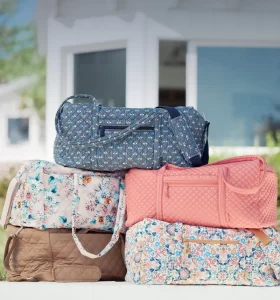
The Most Popular Vera Bradley Travel Bags
Are you planning your next getaway and in need of the perfect travel bag? Look no further than Vera Bradley. Known for its stylish and functional bags, Vera Bradley has become a favorite among travelers everywhere. Here are the most popular Vera Bradley travel bags to consider for your next adventure.
1. Weekender Bag
This spacious bag is perfect for a quick weekend getaway or even as a carry-on for longer trips. With multiple pockets and a removable shoulder strap, the Weekender Bag will keep you organized and comfortable while on the go.
2. Duffle Bag
For those who prefer a smaller bag, the Vera Bradley Duffle Bag is a great option. It still has plenty of room for your essentials and can easily be carried on your shoulder or by its sturdy handles.
3. Rolling Luggage
For those who need even more space, the Vera Bradley Rolling Luggage is a great option. It comes in various sizes and patterns, so you can find the perfect fit for your needs and style.
4. Garment Bag
For those who need to travel with their best outfits, the Vera Bradley Garment Bag is a great choice. It can hold multiple pieces of clothing and has a convenient hanger hook, making it easy to hang in a closet or on the back of a door.
No matter which Vera Bradley travel bag you choose, you’ll be traveling in style and with peace of mind that your belongings are organized and secure.
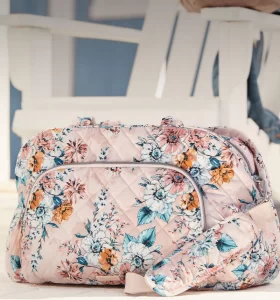
The Best Vera Bradley Travel Accessories
When it comes to traveling, having the right accessories can make all the difference. And if you’re a fan of Vera Bradley, you’ll be pleased to know that they offer a range of travel accessories to accompany their travel bags. Here are some of the best Vera Bradley travel accessories to consider for your next trip:
1. Luggage Tags – Ensure your luggage stands out with a Vera Bradley luggage tag. These colorful tags not only make it easy to spot your bags, but they also include a handy ID card for personalization.
2. Packing Cubes – Keep your belongings organized and easily accessible with Vera Bradley packing cubes. These handy cubes come in various sizes and are perfect for separating clothing, toiletries, and other items.
3. Jewelry Case – Keep your jewelry organized and tangle-free with a Vera Bradley jewelry case. These cases come in various sizes and include compartments and pockets for different types of jewelry.
4. Travel Blanket – For those long flights or car rides, a cozy travel blanket is a must. Vera Bradley offers soft and stylish blankets that are easy to pack and carry.
5. Travel Pillow – Don’t sacrifice comfort while traveling. Vera Bradley offers a range of travel pillows in various shapes and sizes, ensuring you’ll find the perfect one for your needs.
Overall, investing in Vera Bradley travel accessories can enhance your travel experience and make packing and organizing a breeze.
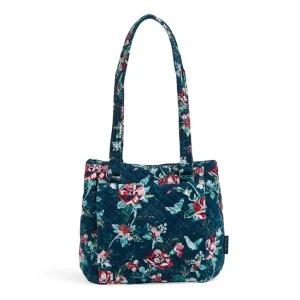
Vera Bradley Shoulder Bags buy now
When it comes to traveling, you want to have a reliable and stylish bag that can keep up with your adventures. That’s why Vera Bradley shoulder bags are the perfect choice for anyone on the go. Made with durable materials and trendy designs, these bags are the ideal combination of functionality and fashion.
One of the most popular shoulder bags in the Vera Bradley collection is the Iconic Vera Tote. This spacious bag has plenty of room for all your travel essentials, including a laptop, books, and a change of clothes. It also features multiple pockets for organization and a zippered closure to keep your items secure. With a variety of colors and patterns to choose from, you’re sure to find the perfect tote for your style.
If you prefer a more compact bag, the Hipster Crossbody is another great option. This bag has a convenient adjustable strap, allowing you to wear it as a crossbody or shoulder bag. It’s the perfect size for a day trip or a night out on the town, with enough space for your phone, wallet, and a few other small items.
For those who love a classic look, the Turnlock Satchel is a must-have. This elegant shoulder bag has a sophisticated silhouette and a turn-lock closure for added security. It also has multiple pockets and compartments for all your travel essentials, including a padded laptop sleeve. This bag is perfect for the fashion-forward traveler who wants to look chic while on the move.
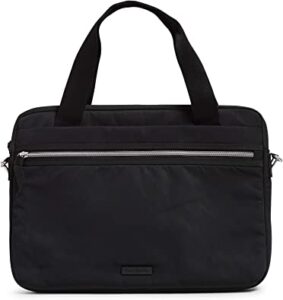
Vera Bradley Laptop Bags buy now
If you’re looking for a stylish and functional laptop bag, look no further than Vera Bradley. With a variety of colors and patterns to choose from, these laptop bags are the perfect combination of fashion and functionality. Here are some of the best Vera Bradley laptop bags:
1. Iconic Laptop Tote: This roomy tote has a padded laptop compartment and plenty of pockets for all your other essentials.
2. Campus Tech Backpack: This backpack is perfect for students or anyone who needs to carry their laptops and other supplies on the go.
3. Laptop Organizer: This compact bag has a padded compartment for your laptop, as well as other pockets for your phone, charger, and more.
No matter which Vera Bradley laptop bag you choose, you can be sure that it will be durable, stylish, and practical. So why wait? Shop now and upgrade your laptop bag game!
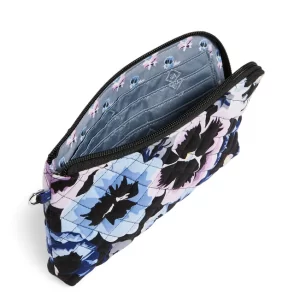
Vera Bradley Wallets & Wristlets buy now
No travel outfit is complete without a stylish and functional wallet or wristlet, and Vera Bradley has a wide selection to choose from. Whether you prefer a classic bifold wallet or a compact wristlet that can double as a clutch, Vera Bradley has the perfect accessory to keep your cards, cash, and ID organized and secure.
One of the most popular wallet styles is the RFID All-in-One Crossbody, which is perfect for those who like to travel light. It features a removable strap that can be worn as a crossbody or a wristlet and has RFID protection to keep your personal information safe. The All-in-One Crossbody also has plenty of pockets and card slots, so you can keep everything organized and easily accessible.
If you prefer a more traditional wallet, the Zip ID Case is a great choice. It’s small enough to fit in your pocket or purse but has a clear ID window and a keyring for added convenience. The Zip ID Case also comes in a variety of fun and colorful prints, so you can express your personal style while keeping your essentials close at hand.
For those who want a bit more versatility, the RFID Front Zip Wristlet is a great option. It has a convenient front pocket that’s perfect for your phone and a back zip pocket for coins or other small items. The wristlet strap is removable, so you can also use it as a clutch for a night out.
No matter which Vera Bradley wallet or wristlet you choose, you can be sure that it’s made from high-quality materials and designed with both fashion and function in mind. So why wait? Shop now and find the perfect travel accessory to complete your look!
Fashion Today
Inauguration fashion today

Inauguration Fashion Today: A Comprehensive Guide to the Latest Trends
We at [Your Company Name] are excited to bring you the latest and greatest in inauguration fashion. As a leading authority in the fashion industry, we understand the importance of staying on top of current trends, especially during significant events like inaugurations.
Whether you’re attending the event in person, watching it from home, or simply looking to stay informed, we’ve got you covered. In this article, we’ll delve into the world of inauguration fashion and highlight some of the latest trends, styles, and designers that are making a splash in 2023.
Trend #1: Sustainable Fashion
As we become more conscious of our impact on the environment, sustainable fashion has become a growing trend in recent years. From recycled materials to ethical production methods, many designers are making efforts to reduce their carbon footprint and create clothing that is both fashionable and eco-friendly.
One designer who is leading the charge in sustainable fashion is Stella McCartney. Her brand is committed to using environmentally-friendly materials and practices, while still creating stylish and innovative pieces.
Trend #2: Statement Coats
Coats have always been a staple of inauguration fashion, but this year they are taking center stage. From bold colors to eye-catching prints, statement coats are a must-have for anyone looking to make a statement at the event.
Designers like Max Mara and Balenciaga are leading the charge in this trend, with their oversized and dramatic coats stealing the show on runways around the world.
Trend #3: Bold Accessories
Accessories are always an important part of any outfit, but this year they are getting bolder and more daring. From oversized earrings to chunky necklaces, accessories are a great way to add a pop of color and personality to any inauguration look.
One designer who is known for her bold accessories is Rebecca Minkoff. Her designs feature bold colors and unique shapes that are sure to make a statement.
Trend #4: Metallics
If you’re looking for a way to stand out at the inauguration, metallics are the way to go. From shimmering dresses to shiny accessories, metallics are a great way to add some sparkle to your look.
Designers like Versace and Saint Laurent are embracing this trend, with their runway shows featuring a range of metallic pieces that are both daring and glamorous.
Trend #5: Monochromatic Looks
For a more understated but still fashionable look, monochromatic outfits are a great option. This trend involves wearing different shades of the same color, creating a cohesive and sophisticated look.
Designers like Tom Ford and Gabriela Hearst are championing this trend, with their runway shows featuring elegant and chic monochromatic outfits.
In conclusion, the world of inauguration fashion is constantly evolving, with new trends and styles emerging every year. Whether you’re looking to make a bold statement or simply want to stay on top of the latest trends, there are plenty of options to choose from.
We at [Your Company Name] hope that this comprehensive guide has helped you stay informed and inspired as you prepare for the inauguration. And remember, no matter what you wear, confidence is the ultimate accessory.
As a fashion enthusiast, you must be eager to learn about the latest inauguration fashion trends. With every inauguration, we witness a new wave of fashion trends, and this year is no different. From Kamala Harris’ historic Vice Presidential inauguration to Joe Biden’s Presidential inauguration, the fashion world has been buzzing with excitement. We, at [Your Website Name], have compiled a comprehensive guide to help you stay up-to-date with the latest fashion trends and get inspired.
Statement Coats: Making a Bold Statement
Coats are an essential component of inauguration fashion, and this year’s coats made a bold statement. The statement coat has been a popular trend this season, and it’s not going away anytime soon. Many attendees of the inauguration chose statement coats to express themselves, from Kamala Harris’ purple coat to Michelle Obama’s burgundy coat.
Masks: A Must-Have Accessory
In the wake of the COVID-19 pandemic, masks have become an essential accessory. Many attendees of the inauguration wore masks to comply with the CDC guidelines. However, masks were not just functional; they also became a fashion statement. Many attendees chose masks that matched their outfits, such as Kamala Harris’ pearl-encrusted mask and Dr. Jill Biden’s floral mask.
Bold Colors: Standing Out from the Crowd
Bold colors were a prominent trend at the inauguration this year. Attendees chose bright colors to stand out and make a statement. From Kamala Harris’ purple coat to Ella Emhoff’s plaid coat, bold colors were a popular choice.
-

 Entertainment1 year ago
Entertainment1 year agoAdmiral casino biz login
-

 Entertainment2 years ago
Entertainment2 years agoHow Much Does The Rock Weigh
-

 Entertainment2 years ago
Entertainment2 years agoDownload Popular Latest Mp3 Ringtones for android and IOS mobiles
-

 Entertainment2 years ago
Entertainment2 years agoTop 10 Apps Like MediaBox HD for Android and iPhone
-
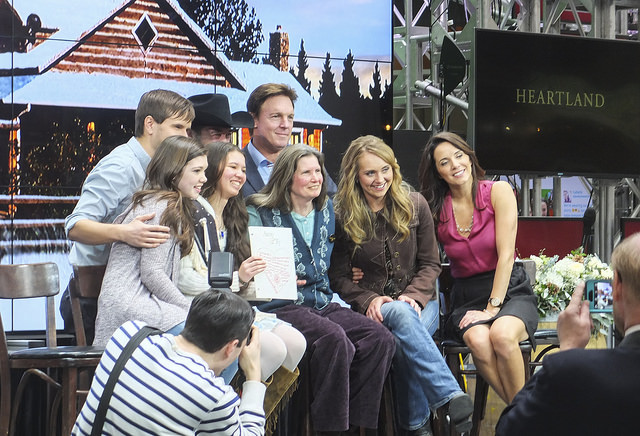
 LIFESTYLE2 years ago
LIFESTYLE2 years agoWhose Heartland?: The politics of place in a rural–urban interface
-
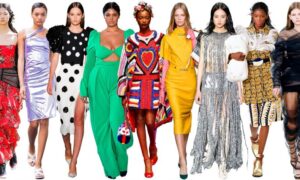
 Fashion3 years ago
Fashion3 years agoHow fashion rules the world
-
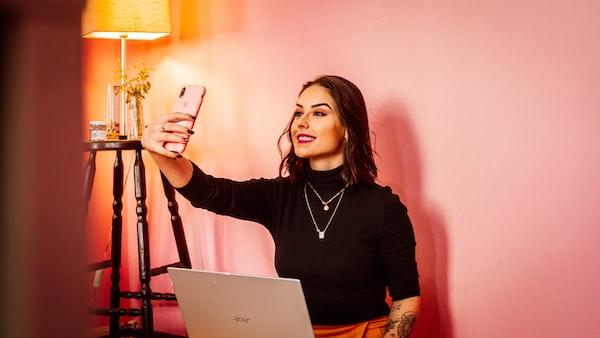
 Fashion Youth2 years ago
Fashion Youth2 years agoHow To Choose the Perfect Necklace for Her
-

 Fashion Today2 years ago
Fashion Today2 years agoDifferent Types Of lady purse


